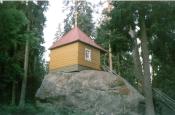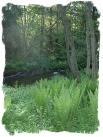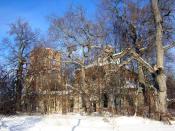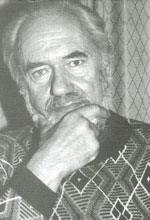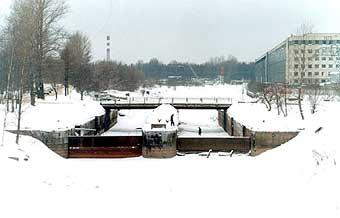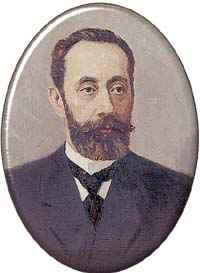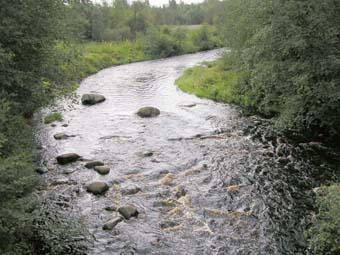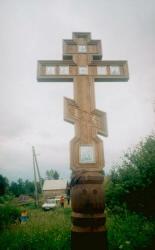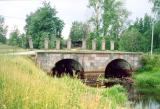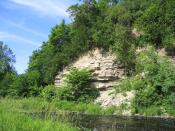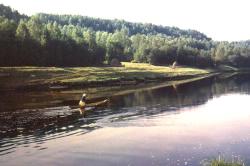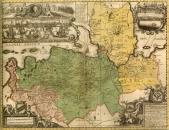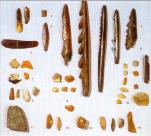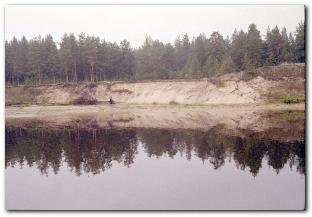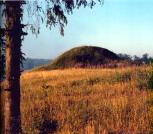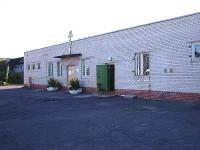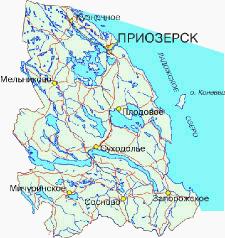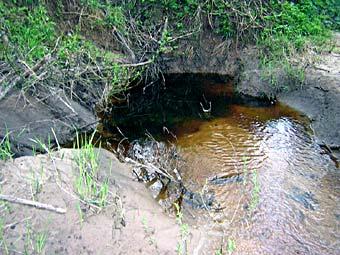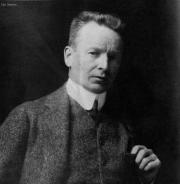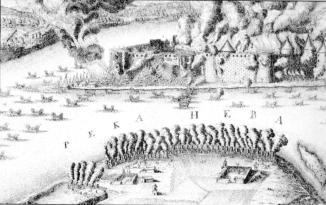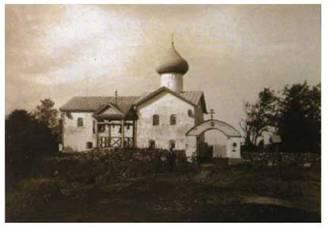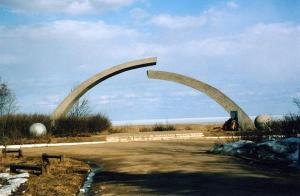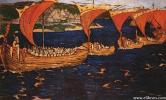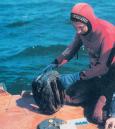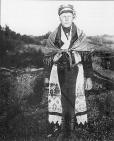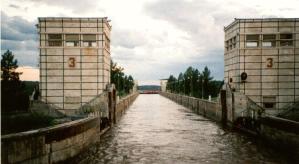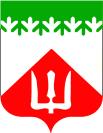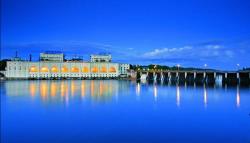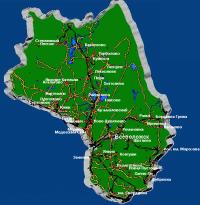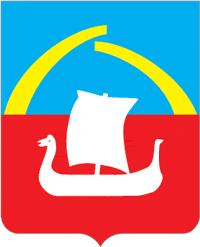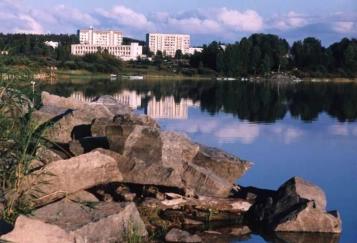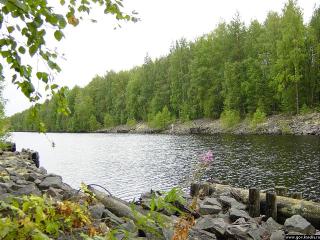|
hidden
|
Cult (worship) stones
Cult stones. The worship of cult stones was registered in all northern part of the East Europe including Baltic countries and Scandinavia. Track-stones, with deep image of a human foot track, are wide presented. Those images are sometimes... more
|
|
|
|
hidden
|
Drainage network
HYDROGRAPHIC NETWORK. Over 19500 rivers and 1800 lakes (Ladoga and Onega being the largest ones) form the H. N. of the Leningrad Oblast. The river network is dense and ramified. One exception is the Izhora Hills where the river network density is... more
|
|
|
|
hidden
|
Dubno, village
DUBNO, a village in Volkhov District. Population: 38. It is located 18 km away from Novaya Ladoga town, to which D. is subordinated administratively. It is located on the Staroladozhsky and Novoladozhsky Canals at the southern coast of Lake Ladoga.... more
|
|
|
|
hidden
|
Eparhy of Korelia
Eparchy of Korelia (Korelian and Oreshsky/Oreshkovsky Eparchy; according to other names - Korelian and Koporsky). It was founded in 1595 after Tyavzinsky Treaty of Peace with Sweden when the town of Korela (now the town of Priozersk) was given back... more
|
|
|
hidden
|
Goryshin, Gleb Aleksandrovich (1931-1998), a literary man
Gleb Aleksandrovich Goryshin (1931-1998), a literary man. He was born in Leningrad city and spent his childhood in the urban settlement of Vyritsa. In 1954 Goryshin graduated from the Journalism Faculty of the Leningrad State University. Till 1957... more
|
|
|
|
hidden
|
"Green Belt of Glory", memorial constructions complex
"The Green Belt of Glory" is a memorial construction complex at the line of the battle of Leningrad in 1941-1944. The complex was created to immortalize the memory about its heroic defenders. The first construction of the future complex had been... more
|
|
|
|
hidden
|
Icons, revered and miracle-working
Icons, revered and miracle-working. The Miracle-Working Tikhvin Icon of the Mother of God, according to the legend , was painted by Apostle Luke. It was moved from Jerusalem to Constantinopole, where it dissappeared in 1383 and it appeared above... more
|
|
|
|
hidden
|
Industrial architecture
Industrial architecture. Study of structural and functional features of the production constructions in terms of their aesthetic expression started recently. On the material of the Leningrad region of such studies have not yet done. A small number... more
|
|
|
|
hidden
|
Inostrantsev, Aleksandr Aleksandrovich (1843-1919), a scientist
Inostrantsev, Aleksandr Aleksandrovich (1843-1919), a geologist, a professor of the St. Petersburg University (1873), a Corresponding Member of the St. Petersburg Academy of Sciences (1901). He graduared from the physico-mathematical faculty of... more
|
|
|
|
hidden
|
"Karlsky Peresheyek" ("The Karelian Isthmus"), a national park
Karlsky Peresheyek ("The Karelian Isthmus") is a national park. It is located in the territory of the Vsevolozhsk, Vyborg and Priozersk districts of the Leningrad Oblast. It occupies the area of 25 thousand hectares. It was founded with the decision... more
|
|
|
|
hidden
|
Kirovsk District
KIROVSK DISTRICT, a part of Leningrad Oblast. Area: 2590.9 sq. km. Population: 97,000. Located in the central part of Leningrad Oblast. In the north, it borders the Lake Ladoga coast; in the north-west and west, Vsevolozhsk District, in the west,... more
|
|
|
|
hidden
|
Kobona, village
KOBONA, a village in Kirovsk District. Population: 133. Located near the Ladoga Canals on the coast of Lake Ladoga, at the mouth of the Kobonka River. The toponym originates from the Finnish “hapana” = rotten. It is mentioned in Novgorod’s scribe... more
|
|
|
|
hidden
|
Konevets Munastery of the Nativity of the Virgin Mary
The Konevets Monastery of the Nativity of the Virgin Mary (Konevets island, the Priozersk district). It is located in the southern part of the Konevets Island in seven kilometres from the West shore of Ladoga Lake. The monastery was founded in... more
|
|
|
|
hidden
|
Kuznechnoye, urban settlement
KUZNECHNOYE, urban settlement in Priozersk District. Population: 5,200. Located in the north-east of the Karelian Isthmus, at the Lake Ladoga coast, near the borders of the Republic of Karelia and Finland. The name was given in 1948. From 1961, K.... more
|
|
|
|
hidden
|
Ladoga Canals, the
LADOGA CANALS. They connect the mouth of the Volkhov River and the head of the Neva, extending along the south coast of Lake Ladoga. There are two canals, Staroladozhsky and Novoladozhsky. The canal construction was urged by the necessity to have a... more
|
|
|
|
hidden
|
Lava River, the
LAVA, a river in Kirovsk District. Length: 51 km. It flows out of the marshes that are situated to the east of the urban settlement of Nazia, and it flows into Lake Ladoga (Petrokrepost Bay.) The toponym is of a Baltic Finnish origin (Finnish.... more
|
|
|
|
hidden
|
Lodeynoye Pole District
LODEYNOYE POLE DISTRICT, a part of Leningrad Oblast located east of Lake Ladoga in the Svir River basin. In the north-west and north, it borders Olonets District of the Republic of Karelia; in the north-east and east, Podporozhye District; in the... more
|
|
|
|
hidden
|
Maps and plans
MAPS AND PLANS. The oldest M.a .P. of the Leningrad Oblast area are dated 16th century. The Neva Land and the Karelian Isthmus with the towns of Noteborg (Schlusselburg) and Kexholm (Priozersk), although with many distortions, are presented in... more
|
|
|
|
hidden
|
Mesolithic monuments, The.
The Mesolithic monuments. Mesolithic (the Middle Stone Age) is the transitional epoch between the Palaeolithic period and the Neolithic period (in Europe - from c 10000 to 7000 BC). Microlite silicon tools, various goods made of bone and horn are... more
|
|
|
|
hidden
|
Neolithic monuments, The
The Neolithic monuments. The Neolithic (New Stone Age, 8000 - 3000 BC) is the epoch of farming and cattling appearance, spinning and weaving, new techniques of processing of stones and ceramics. In the Eastern Europe forest zone the Neolithics is... more
|
|
|
|
hidden
|
Neva River, the
NEVA, river in Leningrad Oblast and SPb. It was formed c. 3000 years ago due to a water breakthrough from Lake Ladoga to the Baltic Sea along the old valleys of the Mga and Tosna rivers. The toponym “Neva” is borrowed from the Baltic Finnish... more
|
|
|
|
hidden
|
"Nizhnesvirsky", a reserve
The "Nizhnesvirsky" natural reserve is located on the territory of the Lodeynopolskiy District. Its are is 41615 hectares. It was founded on 11 June 1980 on the base of the Nizhnesvirsky reserve. It included the shore and the part of the water... more
|
|
|
|
hidden
|
Novaya Ladoga, town
NOVAYA LADOGA, town in Volkhov District. Population: 10,000. Located in the central part of Leningrad Oblast in the Priladozhskaya Lowland, in the mouth of the Volkhov River, 25 km north of Volkhov Town. Administratively, the town also comprises... more
|
|
|
|
hidden
|
Oleg's grave, a tumulus
The burial of Oleg is a tumulus in Staraya Ladoga Village. The chronicle legend about the death of Prince Oleg (he died in AD 912) connects the place of his burial with Ladoga. In the vicinity of the mound there are known three necropolises... more
|
|
|
|
hidden
|
Ozeretskovsky, Nikolay Yakovlevich (1750-1827), a scientist
Hikolay Yakovlevich Ozeretskovsky (1750-1827) was a naturalist and traveller. He was an academician of the Saint Petersburg Academy of Science (1782) and the Russian Academy of Science (1783). He was born in the family of a priest. In 1767 he was... more
|
|
|
|
hidden
|
People who spend time at their dachas (holiday cottage in the country).
Holiday visitors (people who spend time at their dachas, holiday cottage in the country) are seasonal population of settlements and horticultural association . The first dachas (summer country dwellings) appeared in the suburbs of S.Petersburg in... more
|
|
|
hidden
|
Priladozhsky, urban settlement
PRILADOZHSKY, an urban settlement in Kirovsk District. Population: 5,200. The settlement’s name is related to its situation south of the Lake Ladoga coast. P. is in the center of the district, close to the Murmansk Highway, 27 km away from... more
|
|
|
|
hidden
|
Priozersk District
PRIOZERSK DISTRICT, municipal entity. Population: 63,300 (of these, 20,500 live in Priozersk town, the adm. center.) Area: 3,563.1 sq. km. Located in the eastern and north-eastern parts of the Karelian Isthmus. It borders Vsevolozhsk and Vyborg... more
|
|
|
|
hidden
|
Ragusha River, the
RAGUSHA, river, left-hand tributary of the Volozhba River (Lake Ladoga basin.) Length: 42 km. The width varies from 3-5 m at the source to 10-15 m near the mouth. It flows out of the south-eastern part of Lake Nikulinskoye in Khvoinaya District,... more
|
|
|
|
hidden
|
Russians
Russians are an ethnic community, the main population of the Russian Federation. Among Russians there are some ethnic groups and ethnographic groups can be marked (e.g. Cossacks and Pomors (coast-dwellers (inhabitants of White Sea and Barents Sea... more
|
|
|
hidden
|
Saarinen, Eliel (1873- 1950), an architect
Gottlieb Eliel Saarinen (1873- 1950), an architect. Saarinen graduated from the Polytechnic Institute in Helsinki in 1897. He studied painting at the University School of Arts, designed furniture and items of the applied art. During 1896-1904... more
|
|
|
|
hidden
|
Shlisselburg Fortress, the
The Shlisselburg Fortress (untill 1612 it is called Oreshek, from 1612 untill 1702 – Noteburg) is an ancient Russian fortress on Orekhov Island, on the Neva River where it flows out of Lake Ladoga. In 1323 Grand Prince Yury Danilovich and citizens... more
|
|
|
|
hidden
|
Storozhensky St. Nicholas Monastery of St. Cyprian
The Storozhensky St. Nicholas Monastery of St. Cyprian (the village of Storozhno, the Volkhov district). The middle of the 16th century is considered the time of the foundation of the monastery on the Storozhensky Cape of the Zagubsky Peninsula. ... more
|
|
|
|
hidden
|
Svir River, the
SVIR, a river in the north-east of Leningrad Oblast. Length: 224 km. Average flow rate at the mouth: 780 cu. m/s, catchment area: 84,400 sq. km. It flows from Lake Onega at its south-western end, crosses Podporozhye and Lodeynoye Pole Districts, and... more
|
|
|
|
hidden
|
Syas Canals , the
SYAS CANALS. They connect the mouths of the Volkhov and Syas Rivers, and extend along the south-eastern coast of Lake Ladoga, being an extension of the Ladoga Canals. Currently they are in Volkhov District, from Nemyatovo village to Syasstroy town.... more
|
|
|
hidden
|
"The Broken Ring", memorial
The memorial "The Broken Ring" is included into "The Green Belt of Glory" and located on the western shore of Ladoga Lake. It was built in 1966 by workers of the Kalininsky district of Leningrad to the east of the village of Vaganovo at the... more
|
|
|
|
hidden
|
"The Road of Life" (Kokorevo village, the Vsevolozhsk district)
"The Road of Life", a museum (Kokorevo Village, the Vsevolozhsk district). The people's museum was fonded in the one-storeyed wooden building of a former village school in 1969. In Nivember of 1941 in the building there was the command post for... more
|
|
|
hidden
|
"The Road of Life", monuments
The monuments "The Road of Life". "The Road of Life" was only military-strategic transport arterial road passed through Ladoga Lake and connected blockade Leningrad with the country (the official name is the military transport road) from September... more
|
|
|
|
hidden
|
Toponymy legends
Toponymia legends. A toponymia legend is an oral story passed on from generation to generation by the population group and including the information about appearing names of geographic objects (toponyms). The toponymia studies toponyms, ... more
|
|
|
hidden
|
Trade route from the Varangians to the Greeks
The trade route from "the Varangians to the Greeks". During the 9th-11th centuries it connected Rus and the Northern Europe with Byzantine Empire on the route: the Baltic Sea - the Neva River - Ladoga Lake - the Volkhov River - Ilmen Lake - the... more
|
|
|
|
hidden
|
Traditional business and handicraft
TRADITIONAL TRADES AND HANDICRAFTS originated from household occupations and crafts which were aimed at production of household objects for the peasants' own needs. Originality of traditional trades in Leningrad Oblast is connected... more
|
|
|
|
hidden
|
Underwater archaeology
The Underwater archaeology. The under water ancient human sites, harbours and ports, hydraulic and fortification structures, ships were found on the Leningrad Oblast territory. In the early 20th century fishermen found an ancient boat loaded... more
|
|
|
|
hidden
|
Veps
Veps (IN FORMER TIMES - Chud (Chudes), Chukhars, Kaivans; Veps' native names in the Leningrad Oblast are Vepsya/Bepsya/Veps, Vepslyayzhet/Vepslaazhed/Bepslaazhed, Lyudinikad, Chukharid) are an ethnic community. The Veps language is related to the... more
|
|
|
|
hidden
|
Volgo-Baltic Waterway, the
The VOLGO-BALTIC WATERWAY, artificial waterway in the North-West of Russia connecting the Neva River basin with the basins of rivers of the Volga and the Northern Dvina. Its history is traceable back to the Mariyinsky Canal System, the... more
|
|
|
|
hidden
|
Volkhov painting movement
VOLKHOV TOWN PAINTING SCHOOL. Traditions of wood painting are typical for the folklore decorative handicraft developed in the settlements situated in Ladoga Lake area. In St.Petersburg Gubernia the most famous was Volkhov Town Painting School... more
|
|
|
|
hidden
|
Volkhov District coat of arms and flag, the
The Volkhov District's coat of arms and flag are the official approved symbols of the Municipal Union “Volhovskiy rayon” (the Volkhov District) (the coat of arms was approved with the decision of the Representative Assembly of the Municipal Union... more
|
|
|
|
hidden
|
Volkhov River, the
VOLKHOV, river. It flows out of Lake Ilmen in Novgorod Oblast, extends across Kirishi and Volkhov Districts of Leningrad Oblast, and it flows into the Volkhov Bay of Lake Ladoga. Length: 224 km, of which 112 km within Leningrad Oblast. The river bed... more
|
|
|
|
hidden
|
Volkhov, town
VOLKHOV, town. Population: 46,600. Located on both sides of the Volkhov River in its lower course. From the 12th century, there was Mikhailovsky Pogost on the site of V. (the 1500 Novgorod scribe roll mentions Archangel Michael’s Church), which,... more
|
|
|
|
hidden
|
Vsevolozhsk District
VSEVOLOZHSK DISTRICT, a part of Leningrad Oblast. Area: 2945.4 sq. km. Population: 215,200. Adm. center: Vsevolozhsk Town. Comprises Sertolovo Town, six urban settlements (Dubrovka, settlement named after Morozov, settlement named after Sverdlov,... more
|
|
|
|
hidden
|
Vsevolozhsk District coat of arms, the
The Vsevolozhsk District's coat of arms is the official approved symbol of the Municipal Union “Vsevolozhskiy Rayon” (The Vsevolozhsk District). It was approved with the decision of the Representative Assembly of the Vsevolozhsk District of 20... more
|
|
|
|
hidden
|
Vuoksa River, the
VUOKSA, river. It originates in Lake Saimaa (Finland), and flows in Vyborg and Priozersk Districts of Leningrad Oblast. Length: 156 km (of which, 143 km in Leningrad Oblast.). It is subdivided into two arms, the northern and the southern one. The... more
|
|
|
|
hidden
|
White Sea-Baltic Sea Waterway, the
WHITE SEA-BALTIC SEA WATERWAY, a canal system connecting the White Sea and the Baltic Sea. It includes the White Sea-Baltic Canal, Lake Onega, Svir River, Ladoga Canals, and Neva River. It has access to the Volga-Baltic Waterway via Lake Onega. The... more
|
|
|
|
hidden
|
|
hidden
|
|
hidden
|
|
hidden
|
|
hidden
|
|
hidden
|
|
hidden
|
|
hidden
|



